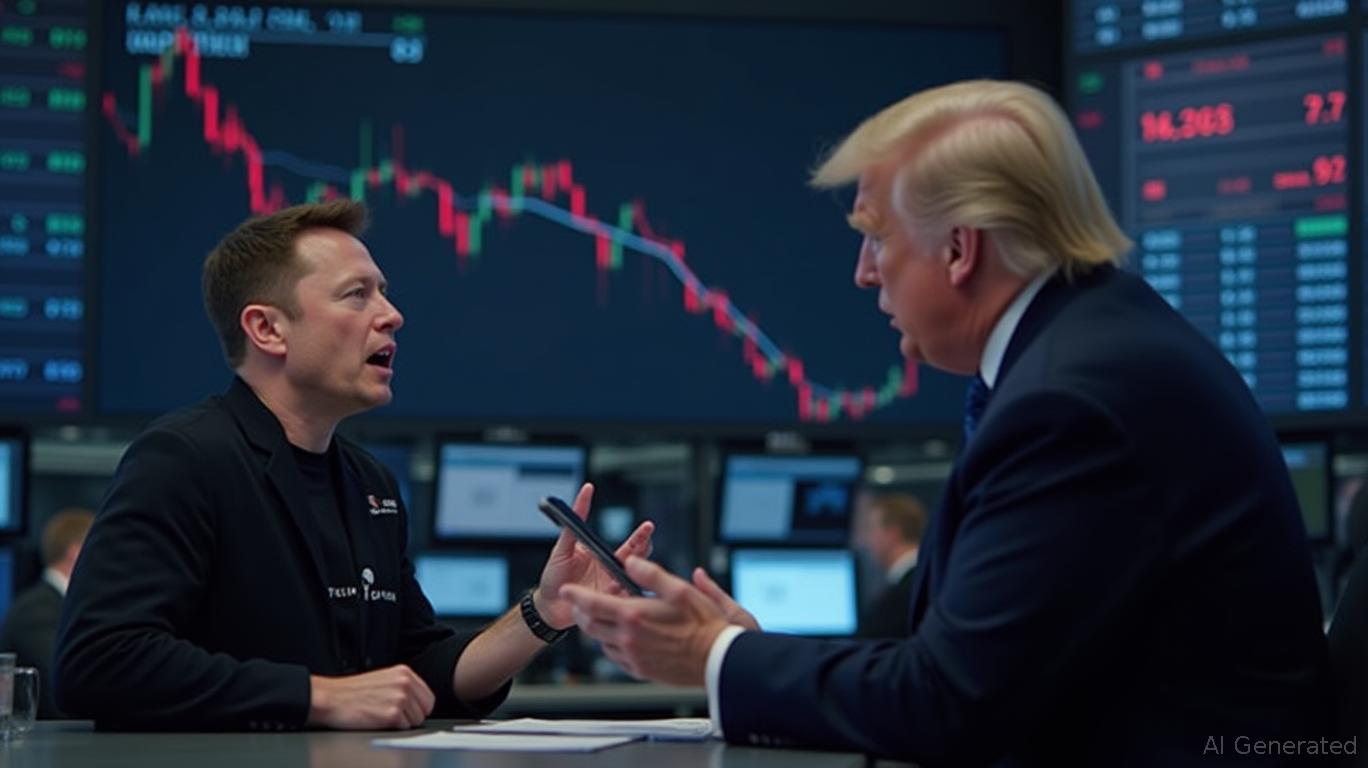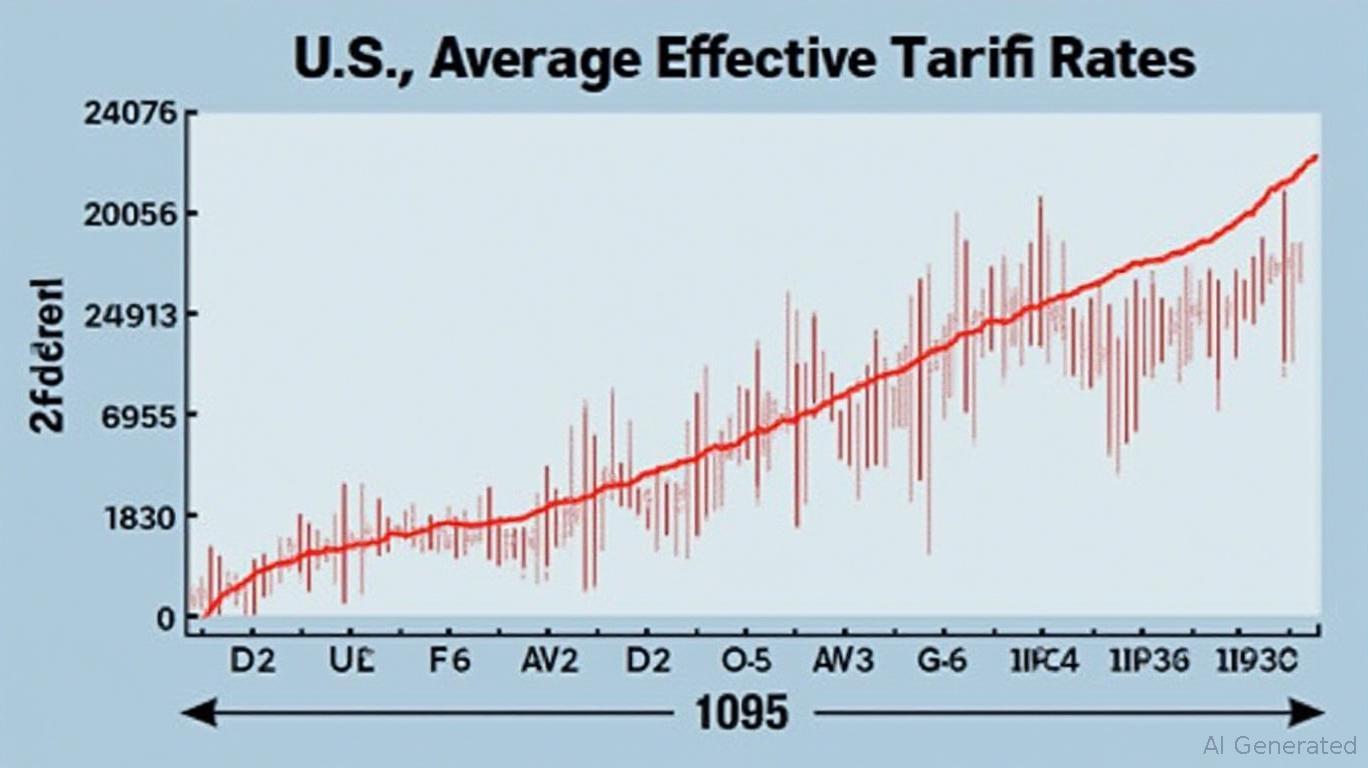Navigating Amazon’s Tariff Challenges and Earnings with Options Strategies
As amazon (AMZN) prepares to report Q1 2025 earnings on April 29, investors face a pivotal moment for the e-commerce and cloud giant. Tariffs, supply chain disruptions, and margin pressures have clouded the outlook, while the stock’s recent volatility—
The Dual Threat of Tariffs and Earnings
President Trump’s tariffs, including a 145% levy on Chinese imports, have directly impacted Amazon’s third-party sellers, who source 60% of their inventory from China. This has forced price hikes or canceled orders, squeezing margins. Meanwhile, AWS’s reliance on imported data center hardware adds another layer of cost pressure.
Analysts project Q1 EPS of $1.38 and revenue of $154.96B, slightly below the $1.86 EPS reported in Q4 2024. Barclays notes Amazon is “best-positioned” to adapt its supply chain, but ad revenue risks loom if sellers cut budgets. Investors will scrutinize management’s guidance on cost pass-through and AWS’s resilience.
Options Strategies for Volatility and Uncertainty
The stock’s closing price of $185.57 (April 24) sets the stage for options plays. Here are three approaches:
1. Straddle Around Earnings
A straddle involves buying a call and a put with the same strike price (e.g., $185) and expiration date (e.g., April 27, ahead of earnings). This profits if the stock makes a significant move—up or down—after the report.
- Cost: Assume the call and put each cost $5, totaling $10 per share ($1,000 for a 100-share contract).
- Break-even: $185 ± $10 = $175 or $195.
- Risk: If the stock remains stagnant, the position expires worthless.
This is ideal for traders expecting a volatile earnings reaction.
2. Bull Put Spread for a Positive Earnings Beat
If you believe Amazon will report stronger-than-expected results (e.g., EPS above $1.38), a bull put spread could profit from a modest rise or stabilization.
- Setup: Sell a put at $180 and buy a put at $175, both expiring in May.
- Credit: Assume a $2.50 credit (net cost).
- Profit: Max gain of $250 (minus commissions) if the stock stays above $180.
This limits downside risk while capitalizing on earnings optimism.
3. Bear Call Spread for Tariff-Driven Underperformance
Should tariffs and margin pressures weigh on results, a bear call spread bets on a post-earnings decline.
- Setup: Sell a call at $185 and buy a call at $190, both expiring in May.
- Credit: Assume a $1.75 credit.
- Profit: Max gain of $175 if the stock closes below $185.
This protects against the stock dropping but caps upside exposure.
Data-Driven Insights
- Historical Volatility: AMZN’s 30-day implied volatility (IV) is 25%, typical ahead of earnings. A rise to 30% post-report could amplify option premiums.
- Analyst Estimates: 38 of 45 analysts rate AMZN “Buy” or higher, with a $200 price target.
- Technical Levels: The $180 support level (April low) is critical; a breach could trigger a drop to $170.
Conclusion: Balance Risk with AMZN’s Long-Term Moats
Amazon’s scale in e-commerce and AWS’s dominance in cloud computing remain formidable, even amid near-term headwinds. The stock’s 5-day forecast of $186.94 (April 28) suggests limited downside, while its 2024 high of $200.00 offers upside potential.
For options traders, a straddle or bull put spread aligns with the bullish bias reflected in analyst targets, while a bear call spread hedges against tariff-driven underperformance. However, with earnings volatility historically spiking 20-30% around reports, timing is critical. Monitor the $180 support level and IV changes to adjust positions dynamically.
In the end, Amazon’s ability to navigate tariffs and maintain margin discipline will determine its trajectory. Options provide the tools to profit from both scenarios—but only if paired with disciplined risk management.












